In the embrace of the mighty Himalayas lies one of the most breathtaking mountains that you can ever witness in your life. Kinnaur Kailash is a celestial wonder that attracts tourists from across the world. This sacred mountain is present in the Kinnaur district of Himachal Pradesh and holds great significance in Hinduism and Buddhism.
It has an impressive height of 6050 metres, offering splendid views of neighbouring ranges like the Dhauladhar in the south, Zanskar peak at the Indo-Tibetan border, Raldang and Jorkaden mountains. Jorkaden also happens to be the tallest mountain in the Kinnaur Kailash range.

Pilgrims and trekkers come here to witness the magnificent splendour of the mountain when the government of India opens it for tourism and visitors. Seeing how Kinnaur Kailash is not accessible throughout the year, it is of paramount importance to plan your trip efficiently to get the best out of the travel experience.
We have you covered!
Here’s everything you need to know about Kinnaur Kailash, the mythological history of the mountain, the duration of the trek and the full itinerary. Read on!
You May Also Like to Read: PEAKS IN INDIA: A PICTURESQUE JOURNEY THROUGH THE MAGNIFICENT MOUNTAINEOUS LANDSCAPES
Religious significance of Kinnaur Kailash
When you visit Kinnaur Kailash, you will notice that the sunrise here is unlike anything you’d see in the rest of the world. The vibrant rays seem to emerge from the mountain before they spread to the surrounding ranges. It feels like the glorious light is originating from the peak. While tourists never had an explanation for this phenomenon, the locals have an interesting legend that can justify this beautiful view.
Lord Shiva is believed to be the most generous deity and anyone who worships him with utmost devotion will receive his blessings. Knowing this, demon Bhasmasura meditated to impress Lord Shiva. When the mighty God appeared before him, he asked for a boon. ‘Hey Prabhu, please give me the power to turn anyone into ash if I place my hand on their head’. Lord Shiva granted the boon to Bhasmasura.
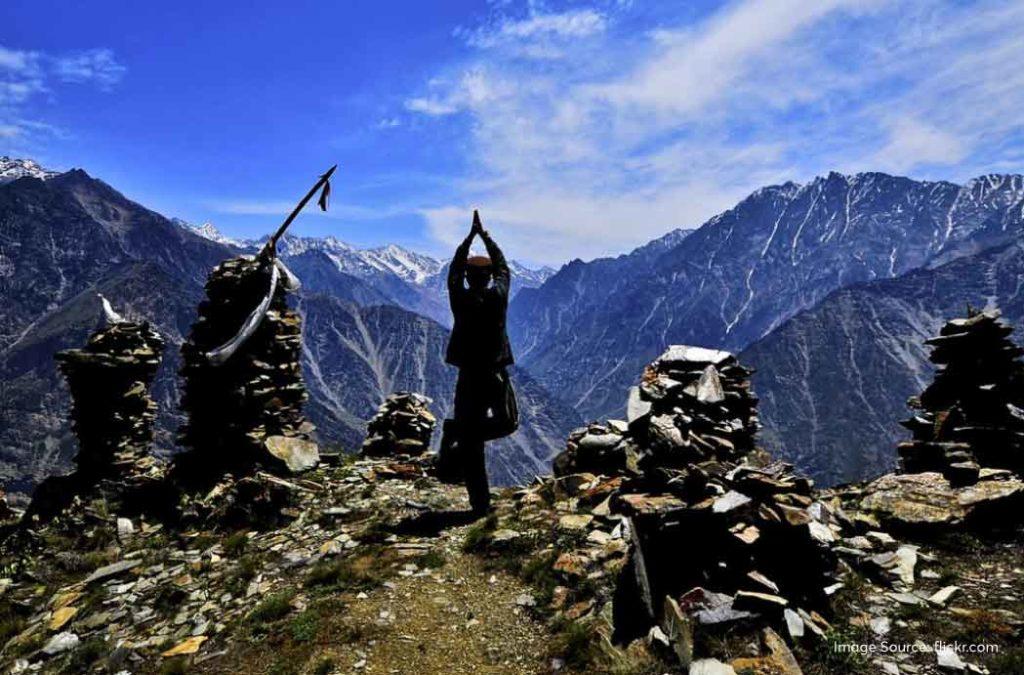
But the demon had sinister plans! He eyed Lord Shiva’s wife, Goddess Parvati, as the ultimate treasure. Her beauty captivated him. The demon wanted to place his hand on Lord Shiva’s head so that he could kidnap Goddess Parvati and keep her for himself. Knowing this, the Lord wanted to destroy Bhasmasura by opening his third eye. But doing so will also destroy the planet.
It is said that Lord Shiva changed his residence multiple times to escape the clutches of Bhasmasura. He ultimately came to Kinnaur Kailash and meditated to find a way to kill Bhasmasura without ending the world. It is on Kinnaur Kailash that he finally destroys the evil reign of the demon by killing him.
People believe that Lord Shiva and Goddess Parvati still reside in Kinnaur Kailash. The vibrant light in the mornings comes from Lord Shiva’s third eye, a positive energy that engulfs the region.
What is Panch Kailash?
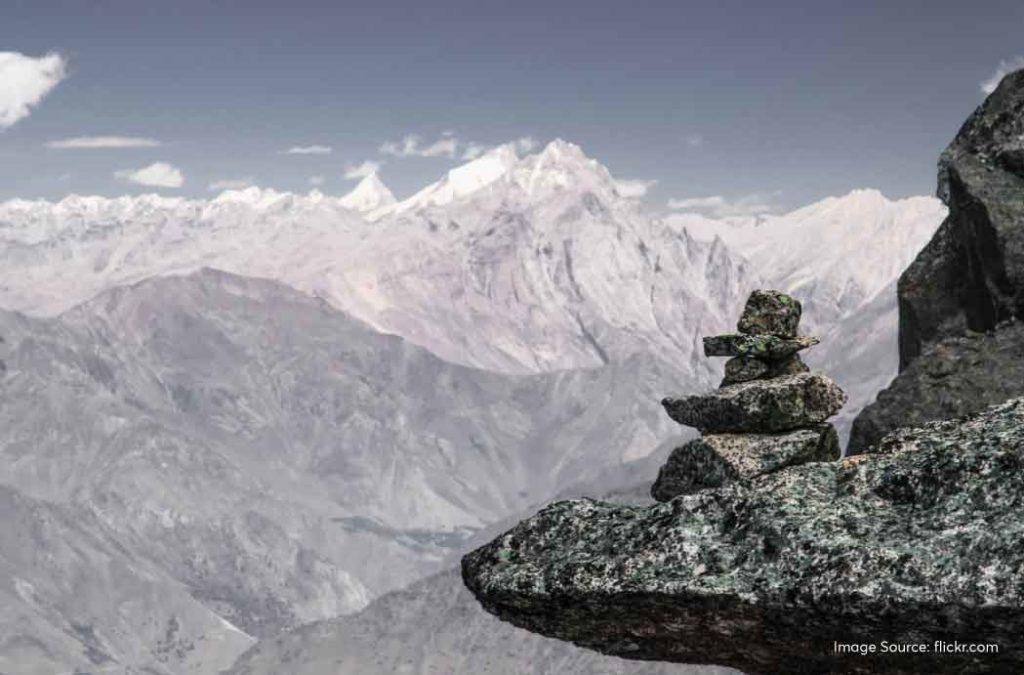
Kinnaur Kailash is a part of the Panch Kailash – the five most important mountain peaks in Hinduism. They are very auspicious and are said to be the peaks where Lord Shiva lived. The ancient scriptures say that visiting these five peaks in one’s lifetime will lead them toward salvation and eternal bliss.
Peak 1 – Mount Kailash
Mount Kailash is believed to be the spiritual centre of the universe and only one person has been able to climb and reach the peak of this holy mountain – monk Milarepa. It is present in the Tibet region of China and tourists need to have international permits to reach the place.
Peak 2 – Manimahesh Kailash
Manimahesh Mountain is a brilliant rock formation that was created by Lord Shiva himself. Hindu mythology says that the deity made the mountain right after his marriage to Goddess Parvati. Circumambulating three times around the Manimahesh lake will rid devotees of their sins. This mountain is present in Chamba, Himachal Pradesh.
Peak 3 – Adi Kailash
Adi Kailash looks like a replica of Mount Kailash, and that is why you’ll hear people calling this mountain ‘Chota Kailash’. It is present in the Kumaon district of Uttarakhand and is only 50km away from Mount Kailash. Lord Shiva meditated in this very place and earned the title ‘Adi Yogi’.
Peak 4 – Kinnaur Kailash
Kinnaur Kailash is a beautiful mountain range that is serene and offers a sense of peace to anyone who embarks on exploring it. The Shiva linga here is a monolithic pillar, present at a height of 4800 metres. The idol changes colour four times a day – white at dawn, yellow during the day, red at dusk, and black at night.
Peak 5 – Shrikhand Kailash
Shrikhand Kailash Peak is present in the Jaun village of Kullu district in Himachal Pradesh. It is open for tourism only in the Shravan months of July and August. There are several caves surrounding the peak and here you will find one of the largest Shiva lingas of the country.
The Kinnaur Kailash trekking trail and itinerary
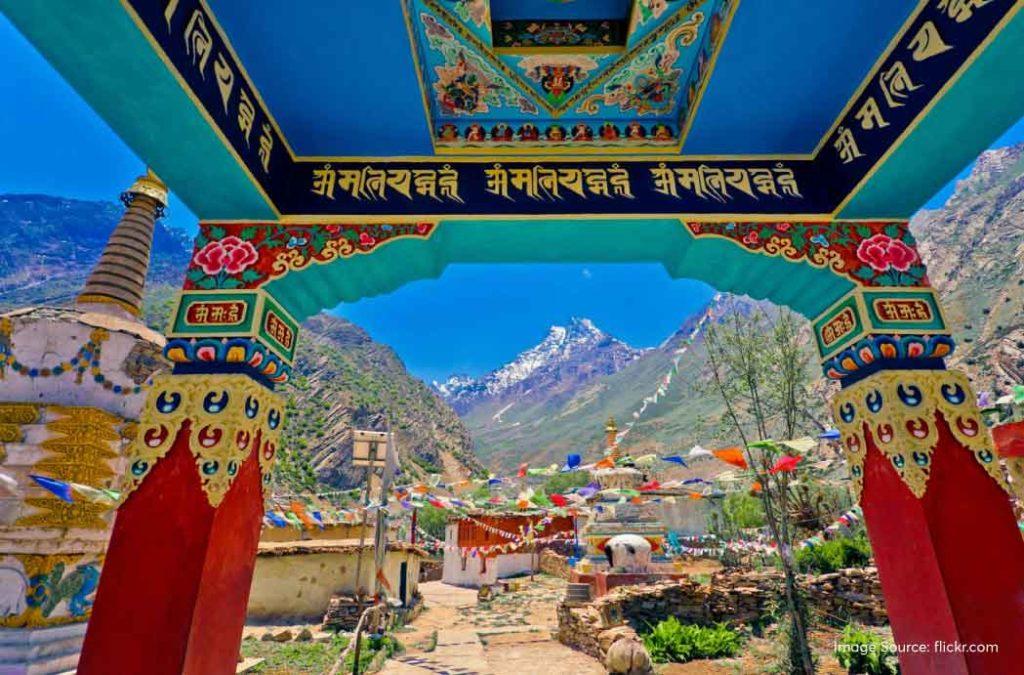
The Kinnaur Kailash Trek can last for 10 to 12 days depending upon your starting point. The duration can also vary for people coming from different parts of the country, considering the time to reach the starting point from their respective cities.
The trek is moderate to challenging and people with strong resilience and stamina can easily reach the peak and also enjoy the refreshing journey.
This is a basic itinerary of the trek excluding the days of travel from your native city to Shimla.
Day 1 – Shimla to Powari
Preferably reach Shimla the previous day and explore the Mall Road, the ridge, and the different churches in the region. This will help your body to start adjusting to the high elevations. On the first day, drive from Shimla to Powari which will take about 9 hours. En route, stop at the Sutlej River Gorge to see the scenic beauty of the river and the Sarahan village with the Bhimkali temple.
Day 2 – Powari to Ganesh Park
Start your trek on the second day from Powari to Ganesh Park. This is about 8 km and can take you anywhere between 5 to 6 hours. You will come across rolling valleys with exotic wildflowers, get the perfect view of the snow-laden mountains in the Kinnaur Valley, and glimpses of the dense pine forests. Set your camp at Ganesh Park.
Day 3 – Ganesh Park to Ganesh Cave
On the third day, start your trek from Ganesh Park to Ganesh Cave after your breakfast. This is a climb of 4 km and can be a little challenging with the rugged terrains. You will find a lot of rhododendron forests and sprawling meadows on your way. Once you reach Ganesh cave, explore the surroundings and sit down to meditate and seek blessings from Lord Ganesha, the dear son of Lord Shiva and Goddess Parvati.
Day 4 – Kinnaur Kailash
Start as early as possible as the trek from Ganesh Cave to Kinnaur Kailash is about 14 km and can take anywhere between 10 to 12 hours. This is the most challenging part of the trek for the pilgrims. It has rocky terrains, narrow ridges, and steep ascents that can seem intimidating to most of us. If needed, take a break, gather your breath and restart. Do not forget to gaze at the stunning views of the Kinnaur Kailash mountain range. You can see Mount Kailash, Raldang, and Jorkaden from here.
Most of the trekkers spend about an hour on the Kinnaur Kailash mountain, seeking blessings from the Shiva linga which is at 4800 metres, and exploring the Parvati Kund. Then they back to Ganesh Park. You will reach Ganesh Park in the late evening. Have your dinner and retire to your campsite.
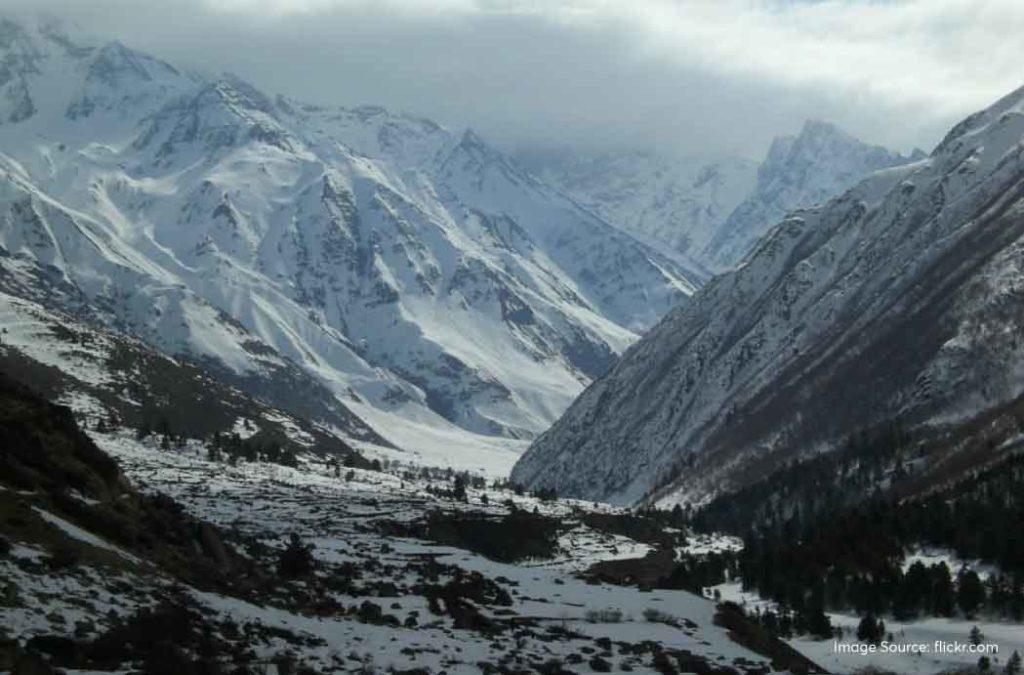
Day 5 – Ganesh Park to Powari
Ganesh Park to Powari is a 7 km trek that can take about 5 hours. Considering that you’ve spent a lot of time walking the previous day, rest well, have a late breakfast and set out on the journey. Once you reach Powari, explore the local markets and try the delicious food from this village.
Day 6 – Powari to Shimla
On the last day of the trek, drive from Powari to Shimla which is a 9-hour drive with scenic views of the valley, surrounding pine forests, and the rippling flow of the Sutlej River that originates from Mount Kailash and meanders its way through the Kinnaur Valley.
People who are not prioritising the visit to Kinnaur Kailash Shiva Linga usually take a longer trek route that is more recreational than devotional. They begin from Reckong Peo, the district headquarters of Kinnaur. They move toward Kalpa, and then to Lambar – Lalanti to reach Charang La Base. They trek up to Chitkul, enjoy the marvellous view of the mountain range and trek back to Reckong Peo.
Tentative dates and budget to visit Kinnaur Kailash
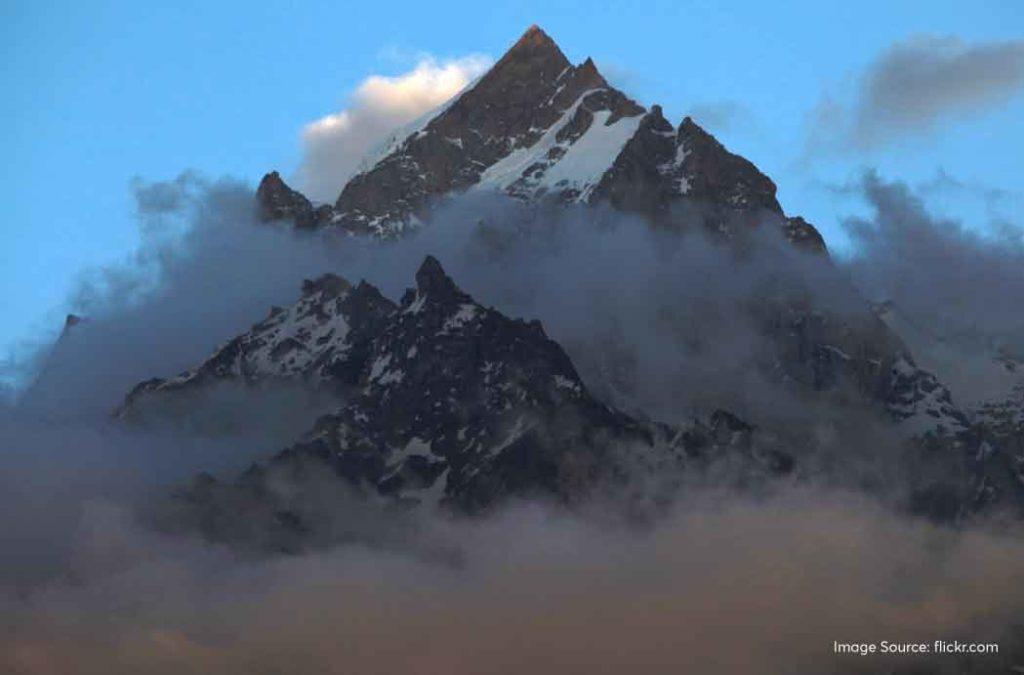
The exact dates of the Kinnaur Kailash Yatra 2024 have not been released yet. However, you can expect the mountain to be open for trekkers and pilgrims from 1st August 2024, at the earliest. If you are planning to hire a guide for your trek, they will offer you a complete package including your travel from Shimla to the base camp and the meals. This will cost you anywhere between 20,000 to 25,000 INR. They also take care of all the permits required for the trek.
You need to have three main things in hand before you can start the ascent.
- Government ID proof – Aadhar Card, Driving License, or Passport.
- Medical Certificate of Fitness that you need to fill out at the Kinnaur district headquarters.
- The Second Medical Certificate for fitness must be filled by a registered medical practitioner.
You can reach out to any of the trekking guides and they will give you all the information you need about the legal documentation to attain permits.
Best time to go on a trek in Kinnaur
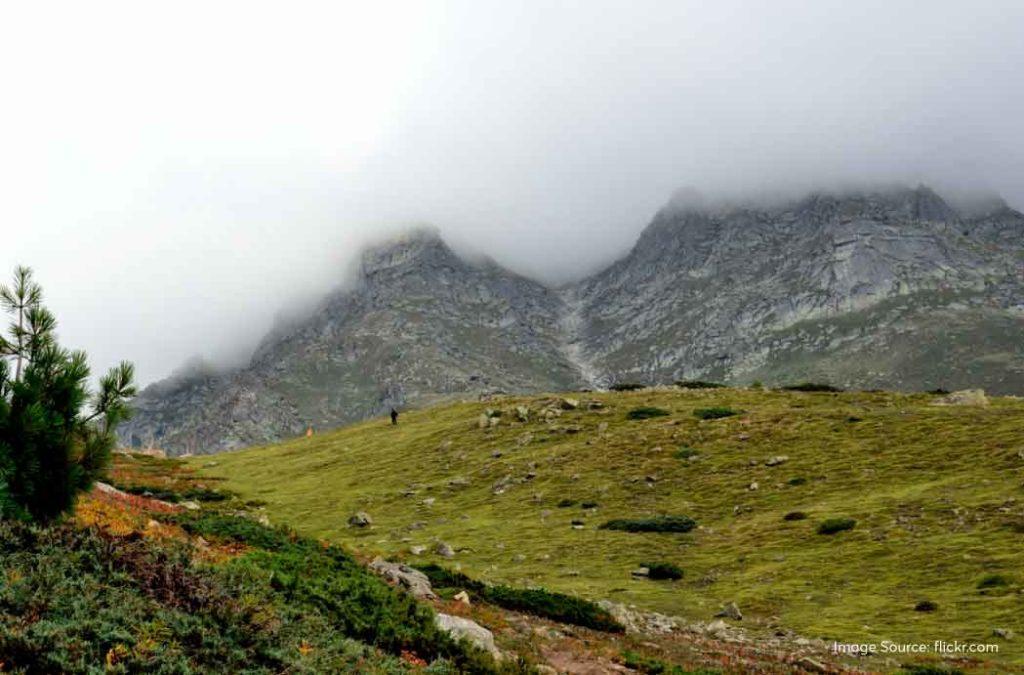
Kinnaur Kailash is not open for visitors all year round, owing to the rough snowing conditions in the winter months and rainfall that the region receives. It is not ideal for trekkers to embark on challenging terrains under such conditions. The yatra begins at the end of July and lasts till September. Most of the trekkers and pilgrims prefer to come here in September.
How to reach Kinnaur?
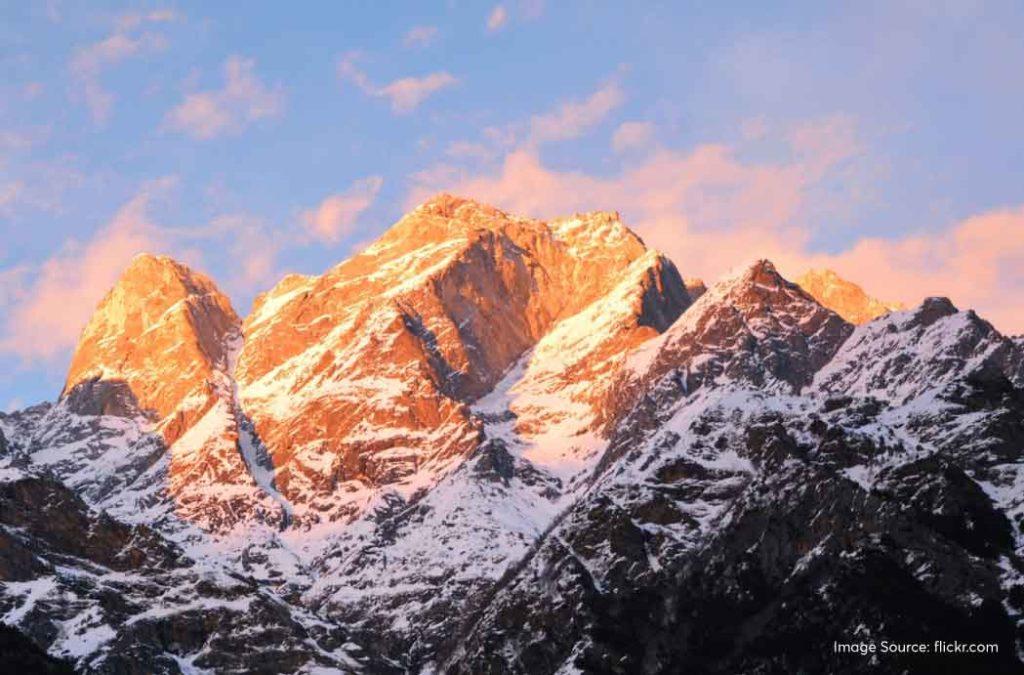
To reach Kinnaur, you must reach Shimla first and then take a bus or private transport to reach Kinnaur district headquarters or Kalpa.
By Air
The best way to reach Kinnaur Kailash by air is to board a flight from your city and reach Chandigarh or Shimla. If you land in Chandigarh, you will have to reach Shimla using road transport or train. The best option would be to reach Shimla and then take an overnight ride to Kalpa or Powari.
While you are in Shimla, book your stay at Hotels in Shimla to relax, rejuvenate, and have a delicious meal before heading out toward your exhilarating trek.
By Rail
If you are planning to use the services of a trekking guide, prefer taking a train to the Shimla Railway Station. Here, you will find your trekking guide arranging private transport to take you to Kinnaur district headquarters or Kalpa directly. People who are trekking on their own can reach the Kalka Railway Station which is about 303 km away from Kalpa.
By Road
You can easily find buses in Shimla that will take you toward Tangling, another often-used base camp for the Kinnaur trek. This is close to the Kinnaur district headquarters, only about 30km away. The ride toward Tangling or Recking peo (headquarters) is enchanting with the Sutlej River flowing in its full glory while the dense pine forests overlook its journey.
The Kinnaur Kailash trek is one of the most challenging treks in Himachal Pradesh. You have to build a lot of resilience, and confidence, and learn to channel your energy properly to complete this expedition. However, once you reach the ending point and witness the gorgeous beauty of the mountains, all efforts and struggles seem worthwhile. Plan your Kinnaur Kailash 2024 trip soon and explore the sacred beauty of the abode of Lord Shiva.








